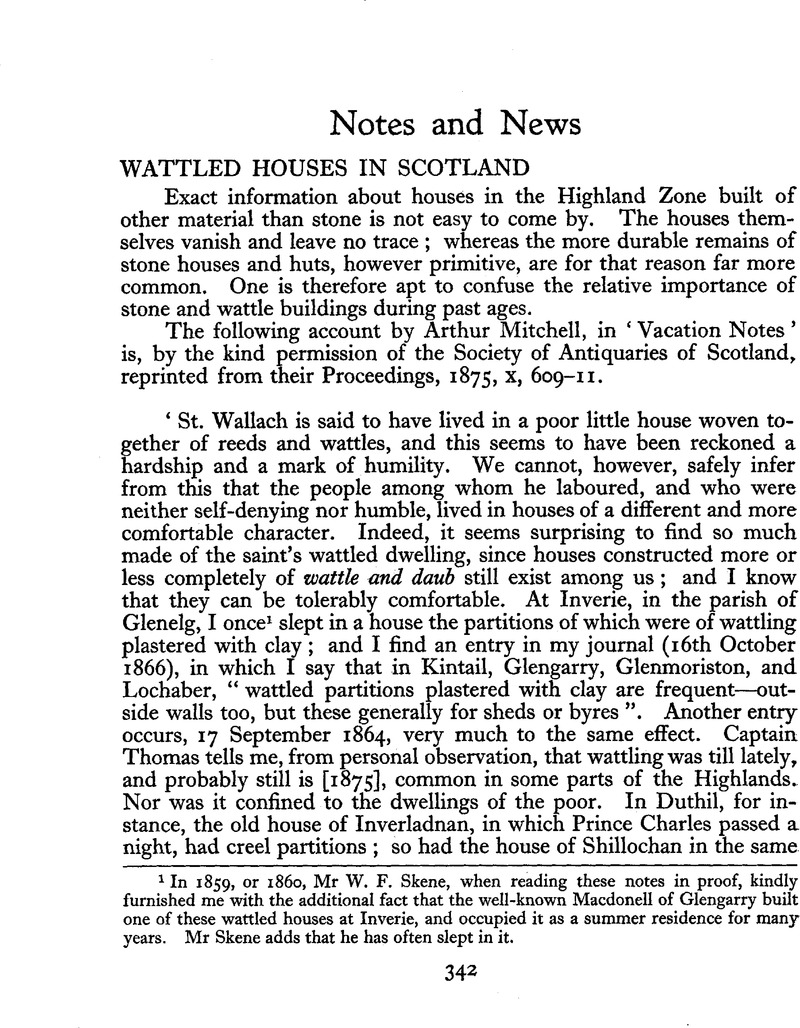No CrossRef data available.
Article contents
Wattled Houses in Scotland
Published online by Cambridge University Press: 02 January 2015
Abstract

- Type
- Notes and News
- Information
- Copyright
- Copyright © Antiquity Publications Ltd 1939
References
1 In 1859, or i86o, Mr W. F. Skene, when reading these notes in proof, kindly furnished me with the additional fact that the well-known Macdonell of Glengarry built one of these wattled houses at Inverie, and occupied it as a summer residence for many-years. Mr Skene adds that he has often slept in it.
2 I state this on the authority of Mr David F. Ross.It was in the house of Shillochan that a remarkable piece of Scotch carving on fir was latelydiscovered. See Inverness Courier of 24 September and 15 October 1874.
3 New Stat. Acct. vol.7, p.97.Google Scholar
4 Book of Deer by DrStuart, preface, p. CLI.Google Scholar
5 Walker’s, Econom. Hist, of the Hebrides and Highlands Edin. 1806, vol.1, 95.Google Scholar
6 Glimpses of Life in Victoria By a Resident. Edin. 1872, p. 10.Google Scholar See also Voyages to the East Indiesby John Splinter Stavorinus, Lond. 1798, vol.1, p.57.Google Scholar
7 An oratory built of wood, wattling, or clay was said to be built ‘after the manner of the Scots’, and one of stone ‘after the Roman manner ’. The wooden oratory which King Edwin erected at York was enclosed in the stone church which he afterwards built there; and William of Malmesbury tells us that the ‘old church of wattled work ’ —St. Mary of Glastonbury—was, at the end of the sixth century, ‘covered with a coating of boards’ by order of Paulinus, Bishop of York. See Babington, , Arch. Camb. 1857, vol.3,p.147).Google Scholar
8 DrStuart, Book of Deer, pp.cxLix to CLVii;Google Scholar Perrott, R. in the Arch. Camb 1857, vol.3, p.147;Google Scholar and Reeve’s (sic, for Reeves’s] Adamnan, pp. 106, 114 and 177.
9 op. cit. p. 177-9


